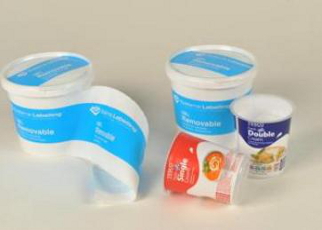We asked Stephen Lloyd,director of marketing and business development for Systems Labelling,to provide us with additional details regarding the company's intriguing R-IML technology that makes the in-mold labels for in-mold labeling removable(see Removable in-mild label,posted April 2012).
PD:What interest are you seeing for the product and technology?
Lloyd:Key U.K.supermarket chains and brand owners are keen on the concept,and some have embarked on trials;however,it needs to see a wholesale industry shift if we are to realize the full environmental benefit.Therefore we are working with government waste-reduction organizations to lobby for change.

What is the current commercial status?
The customers running trials are focusing on food product packaging for tubs and cups.We are processing both U.K.and international patents for the technology.
Where is this product available?
It is available directly in the U.K.and throughout Europe.Shipping costs are prohibitive for label pricing outside these areas,however we are offering license agreements for other IML manufacturers with the aim to provide the innovation on a global scale.

What options are available?
The options are quite simple in that this solution can replace current in-mold labels and be applied using the same equipment,dwell times and temperatures.Absolutely no change to molding/application processes,though label printers need to source material ready treated or purchase a license to convert standard IML substrates in-house.
How do costs compare to conventional IML labels?
It is approximately 15 percent more expensive than conventional in-mold labels.However,the closed-loop benefits have to be considered.The value of recycled polypropylene(rPP)will increase in the future;and food-grade rPP is achievable when using this label.The rPP recycling market would change drastically as feedstock quality is increased.
How is the label removed for recycling?
The label is removed when the waste plastic is granulated and air filtration separates the"lights"(label waste)and the heavier polypropylene fragments.This is done as a dry process right at the start of the recycling journey and again without any changes to current equipment configuration.This has been tested successfully at an industrial scale in the U.K.





